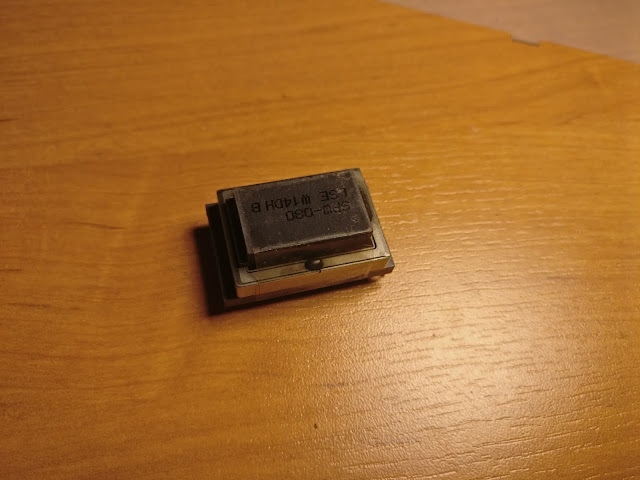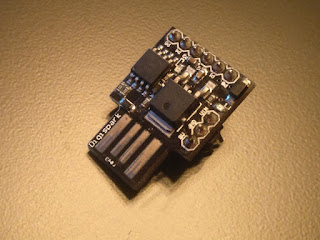Homemade bug zapper to save my dog from the horde of horse flies.
This year there's seemingly no end to flies and I mean those that bite. These biting flies are also known as horse flies. The buggers have been pestering my dog and absolutely driving the poor pupper insane. And not only my dog but also me since I can't do any work on my car without one of the bastards flying over to bite me in the legs. I already have to deal with mosquitoes sucking me dry during the night and now I have these flies biting me during the day, which is no bueno. And I'm having none of it, it's time I did something about this flying menace.
I previously tried the bottle trap but it didn't work as it only caught a total of one fly during a whole week. This time I want something big, I want high voltage. So first let's make the driver.
I plan to use a 9V power brick to power the zapper and of course 9V is not enough to zap a fly so I need something to step the voltage up. For this task I used a high voltage transformer taken from an old LCD screen that had a CCFL backlight. The particular transformer I used was set up for push-pull operation, which fortunately could also be used in a joule-thief configuration.
The circuit was built on a breadboard and is based on the joule-thief circuit. This way the circuit runs as a flyback SMPS and will generate higher output voltages.
With a little tweaking I managed to get this circuit to produce almost 1400V, which I think should be enough to zap a fly, but I'll have to see. A resistor divider consisting of seven 1M Ohm resistors and one 5k1 resistor was used to measure the voltage, but this seems to load the driver somewhat, because without the resistor divider connected I get bigger sparks. So in reality the voltage is even higher. This thing absolutely slaps, shorting the output capacitor is too fun and as the sparks start flying you start smelling the ozone. Too bad I couldn't capture any sparks with my phone but they were quite intense. Oh and of course a disclaimer: High voltage is dangerous.
Next I had to make the cage where the bugs get zapped. For this I used some spare mesh I had for another project that never came along. From this piece I cut out two strips, 25x100cm in size. At first I planned on making a 25x25cm box but soon decided that instead a circle would be better. And also as luck would have it, while cutting the net I got bit multiple times by the damn flies.
The idea was that I would roll one net into a cylinder and then add something plastic on top to isolate it from the outer layer of net that would go on top. The ends of this cage were joined with copper wire because I had it at hand. Galvanized steel, such as this mesh, can also be soldered to with a regular soldering iron and solder.
To separate the inner and outer layers of the net I used some weed whacker line that I had bought for an experiment a long time ago. I didn't have any use for it until now. First I wound the plastic line around the cage in a spiral and then weaved some strips through the net to hold the line in place.
After this I rolled on the outer layer of mesh and secured it the same way by threading the trimmer line through the mesh, being careful not to short the meshes together. After the cage was done I tested it with my multimeter and found out that there were shorts. Seems like right along the edge the nets were just slightly touching so adding some plastic in between sorted the short out. I then soldered two wires for the high voltage. After this I also measured the capacitance of the cage, since its basically a capacitor. I Got about 450pF, which is not bad and should add a little kick to the zap. Since the ends of this cage were open I made disks out some cardboard to cover them up and the zapper was ready to go.
My plan was to put a plate with a piece of meat inside of this cage to lure the horse flies since they seem to love meat so much. But unfortunately it had already gotten dark so all the flies have gone to sleep. So instead I took a 1€ solar garden light and put it inside to see what gets zapped during the night. The zapper looks quite menacing in the dark.
After a few hours had passed I couldn't help but check on the zapper to see what's cookin'. Needless to say I was a little disappointed because there weren't many bugs besides two moths sitting on the net but they weren't even going deep enough to get zapped. There were also a few tiny flies stuck to the net so even though the holes in the net are quite large even the smallest of flies still got zapped, which is reassuring. I moved a couple of the bugs around to see how they spark and didn't see anything spectacular. Seems the voltage is too low to really slap those bugs hard. So I disconnected the voltage divider I had hooked up to the zapper. This had seemingly turbocharged the zapper, because as soon as I plugged the high voltage supply back in, all of the tiny bugs, that were stuck to the net, got absolutely vaporized. So now my zapper is effectively self cleaning, neat.
Now all that is left is to wait for a new day to see how good this zapper is at killing those pesky horse flies. And maybe a driver upgrade for even more power.
Anyways, that's it for now, thanks for visiting my blog.














Komentarai
Rašyti komentarą